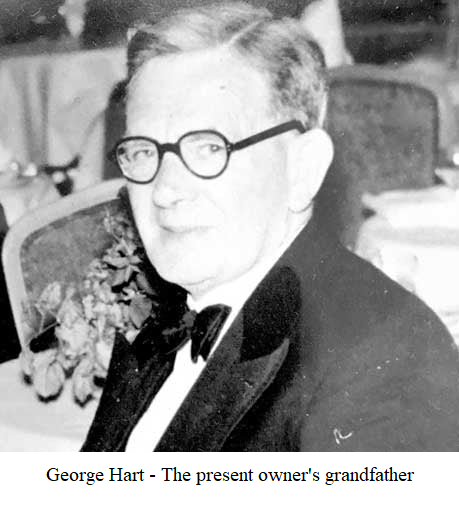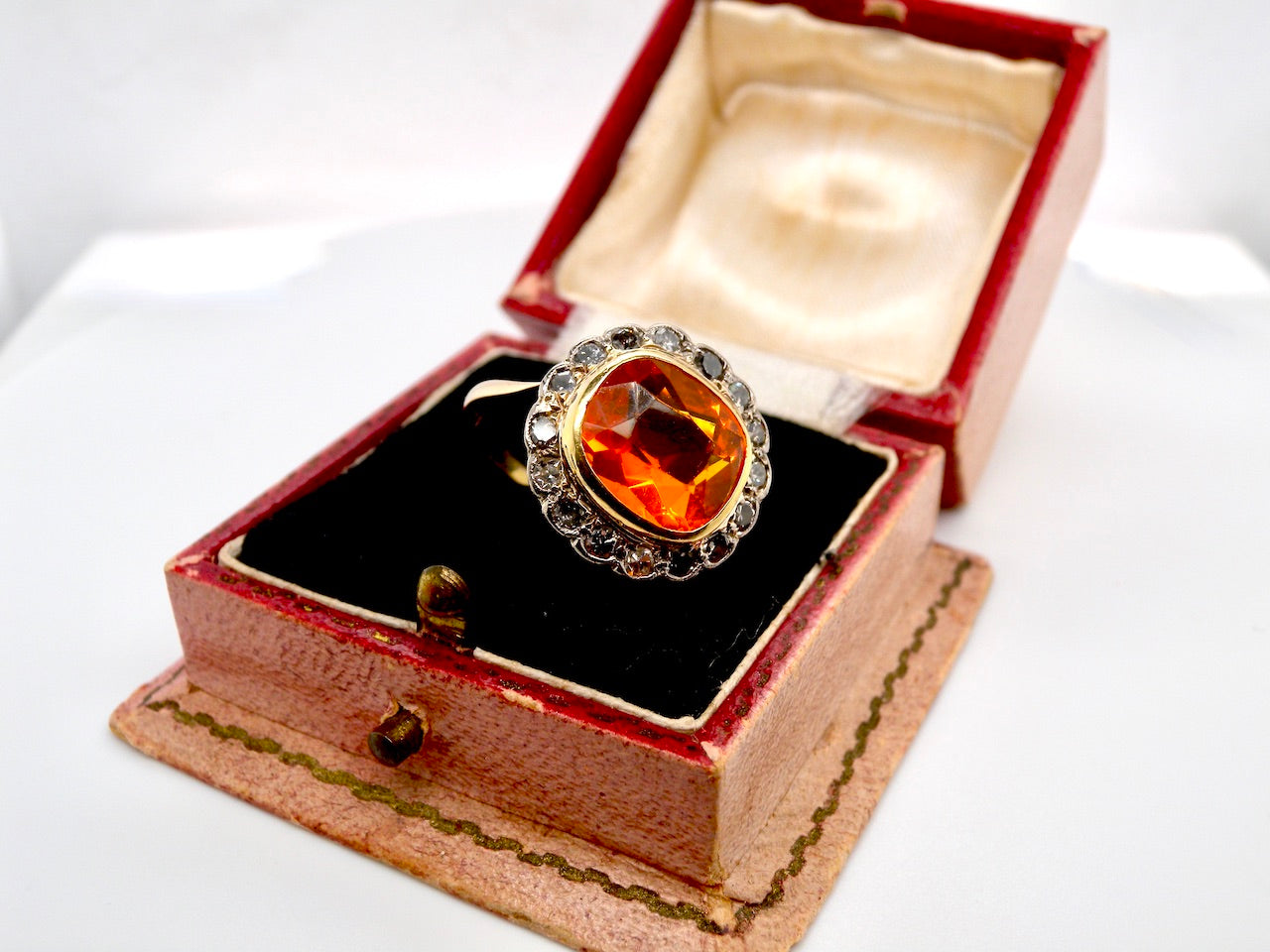Antique Cut Diamonds
Antique cut diamonds are a type of diamond that were cut and polished by hand using techniques that are no longer used today. They have a unique charm and character that sets them apart from modern cuts, making them highly sought after by collectors and jewellery enthusiasts.
Antique cuts include a variety of different styles, such as the rose cut, old mine cut, old European cut, and transitional cut. Each style has its own unique characteristics in terms of shape, facet patterns, and overall appearance.
One of the main benefits of antique cut diamonds is their individuality. Because they were all cut by hand rather than by machine, each diamond is unique with its own set of imperfections and quirks. This makes antique diamonds perfect for those looking for a one-of-a-kind piece of jewellery.
Rose Cut Diamonds
Rose cut diamonds are a beautiful and unique type of antique cut diamond that have been popular for centuries. They were first developed in the 16th century and remained popular until the early 20th century when more modern cutting techniques were introduced. They get their name from their resemblance to the petals of a rosebud and have a flat bottom with triangular facets that rise to a point at the top, creating a dome-like shape. The number of facets can vary, but typically they have between 12 and 24 facets.

One of the most distinctive features of rose cut diamonds is their flat bottom, which makes them ideal for light reflection. When light enters through the top of the diamond, it reflects back up through the facets, creating a beautiful sparkle that is different from other diamond cuts.
They very popular during the Georgian and Victorian eras, where they were often used in engagement rings and other fine jewellery pieces. Their popularity declined during the Art Deco period when more modern cutting techniques were introduced. However, in recent years there has been a resurgence in interest in antique jewellery, including rose-cut diamonds.
Overall, rose cut diamonds are a stunning choice for anyone looking for something unique and full of history. Their timeless beauty ensures that they will remain a sought-after choice for years to come.
Old Mine Cut Diamonds
Old mine cut diamonds are a type of antique diamond that were cut by hand in the 18th and 19th centuries. They are characterized by their cushion shape with rounded corners, high crown, and small table. Old mine cut diamonds also have large facets, which give them a unique sparkle that is different from modern cuts.

One of the most distinctive features of old mine cut diamonds is their romantic charm. Because they were cut by hand rather than by machine, each diamond has its own unique character and imperfections. This makes them perfect for vintage-inspired jewellery or as accent stones in modern pieces.
Old mine cut diamonds were very popular during the Victorian era when they were often used in engagement rings and other fine jewellery pieces. Their popularity declined during the Art Deco period when more modern cutting techniques were introduced.
Today, old mine cut diamonds are highly sought after by collectors and jewellery enthusiasts who appreciate their unique beauty and historical significance. They offer a timeless elegance that cannot be replicated with modern cutting techniques, making them a valuable addition to any collection or piece of jewellery.
Old European Cut Diamonds
Old European cut diamonds are another type of antique diamond that were popular during the late 19th and early 20th centuries. Like old mine cut diamonds, they were cut by hand and have a unique charm and character that sets them apart from modern cuts.

Old European cut diamonds are round in shape with larger facets than modern round brilliant cuts. They also have a smaller table and higher crown, giving them a more vintage look. The larger facets allow for more light to enter the diamond, creating a beautiful sparkle that is different from modern cuts.
One of the main benefits of old European cut diamonds is their versatility. They can be used in both vintage-inspired jewellery or as accent stones in modern pieces. Their timeless elegance makes them perfect for engagement rings, earrings, pendants, and other fine jewellery pieces.
Old European cut diamonds were very popular during the Art Nouveau and Edwardian eras when delicate and intricate designs were favoured. Their popularity declined during the Art Deco period when more geometric shapes became fashionable.
Today, old European cut diamonds are highly prized by collectors and jewellery enthusiasts who appreciate their unique beauty and historical significance. They offer a classic elegance that cannot be replicated with modern cutting techniques, making them a valuable addition to any collection or piece of jewellery.
Transitional Cut Diamonds
Transitional cut diamonds are a type of diamond that were cut during the 1920s and 1930s, bridging the gap between antique cuts such as old mine and old European cuts, and modern round brilliant cuts. They were created using early versions of cutting machines, which allowed for more precision than hand-cutting techniques.

Transitional cut diamonds have a round shape with larger facets than antique cuts but smaller than modern round brilliants. They also have a smaller table and higher crown, giving them a unique look that combines vintage charm with modern brilliance. The larger facets allow for more light to enter the diamond, creating a beautiful sparkle that is different from both antique and modern cuts.
One of the main benefits of transitional cut diamonds is their versatility. They can be used in both vintage-inspired jewellery or as accent stones in modern pieces. Their timeless elegance makes them perfect for engagement rings, earrings, pendants, and other fine jewellery pieces.
Today, transitional cut diamonds are highly sought after by collectors and jewellery enthusiasts who appreciate their unique beauty and historical significance. They offer a classic yet contemporary look that cannot be replicated with antique or modern cutting techniques, making them a valuable addition to any collection or piece of jewellery.
Difference between Antique Cuts and Modern Cuts
Antique cut diamonds have less brilliance than modern diamond cuts because they reflect less light due to their shallow depth. However, they make up for this with their charm, character, and history. Modern diamond cuts such as round brilliant cuts, princess cuts, emerald cuts etc., are designed for maximum sparkle while antique diamond cuts focus on showcasing the natural beauty of the stone.
Interactions with Today
Antique cut diamonds are still highly valued today due to their rarity and unique character. Many people choose antique cut diamonds for engagement rings or other special occasions because they want something that is not mass-produced or typical. Vintage jewellery is becoming increasingly popular as people seek out pieces that tell a story or have historical significance.
In conclusion, antique cut diamonds offer us an insight into our past while providing us with beautiful gems that are still highly valued today. Whether you prefer modern or antique diamond cuts, it's clear that these precious stones will continue to captivate us for years to come. Don't forget to check out our fine Antique cut diamonds throughout the store
You May Also Like: Vintage Diamond Jewellery



